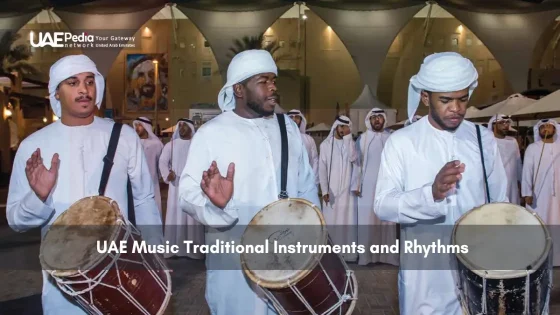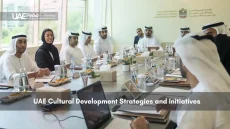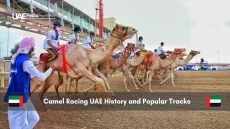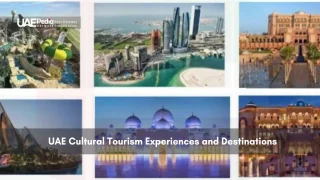What happens when centuries-old survival skills meet futuristic cities? The Emirates’ ancestral traditions aren’t relics—they’re thriving in rooftop majlis gatherings, AI-enhanced camel races, and architecture echoing desert dunes. This fusion defines today’s cultural heartbeat, where storytelling under starlight coexists with neon-lit innovation.
The desert isn’t just scenery here. Its vastness shaped values like resourcefulness and community—principles visible in eco-friendly skyscrapers and family-run date farms using blockchain tracking. Even you might’ve tasted this blend: sip karak chai at a food truck festival, or watch falconry drones monitor wildlife reserves.
Our guide walks through this living heritage. We’ll explore how sandstorms inspire art installations, why nomadic poetry influences TikTok trends, and where to experience authentic Emirati hospitality. Consider this your backstage pass to traditions that refuse to fade—they evolve.
In this section, you’ll discover:
- How ancestral customs fuel modern festivals and sustainable design
- The desert’s hidden symbolism in local art and social values
- Ways to respectfully engage with this culture during your visit
Embracing the Bedouin Heritage in the UAE: Past and Present
Ever wondered how a desert’s whisper echoes through glass towers? The answer lies in a living tapestry where ancestral wisdom threads through hyper-modern life. For centuries, survival here meant mastering scarce resources—skills now reborn in solar-powered cities and water conservation tech. As one researcher notes, “The desert taught us to think seven generations ahead”—a mindset visible in today’s green architecture.
Oral storytelling once mapped oases and warned of sandstorms. Today, those tales inspire modern poetry slams and AI-assisted language preservation projects. Traditional attire like the kandura isn’t just clothing—it’s wearable history, its white fabric reflecting sunlight just as it did for nomads centuries ago.
This blend of old and new thrives because everyone plays a role. Grandparents teach grandchildren star navigation; chefs reimagine camel milk desserts as viral cafe trends. Even the vibrant geometric patterns in handwoven sadu textiles now decorate metro stations and smartphone cases.
You’ll taste this fusion in spice markets where saffron meets lab-grown honey. Hear it in dialects blending ancient Arabic with startup slang. The past here isn’t preserved behind glass—it’s the compass guiding tomorrow’s innovations. Ready to trace these threads yourself?
Historical Journey of Bedouin Life in the UAE
How did a culture born under shifting sands become the bedrock of a nation? Let’s rewind through time—before skyscrapers and tech hubs—to when survival hinged on reading stars and sharing scarce resources. This journey reveals how centuries of adaptation shaped values still celebrated today.
Origins and Nomadic Beginnings
Picture families traversing endless dunes on camelback, guided by ancestral knowledge of hidden oases. For generations, people thrived in harsh conditions by mastering water conservation and forging tight-knit communities. Meat from livestock wasn’t just food—it fueled celebrations and cemented bonds during lean seasons.
Their secret? “Move with the land, not against it,” as old proverbs advise. They crafted tents from goat hair that breathed in summer heat and repelled winter rains. Even children learned to track animal paths or identify edible plants—skills that echo in today’s sustainability efforts.
Impact of Trade and Settlement
When caravan routes connected the region to distant markets, everything changed. Dates, pearls, and spices flowed through desert hubs, blending outside influences with local customs. Settlements grew near water sources, becoming cultural crossroads where storytelling and bartering happened under shared tents.
Trade didn’t just bring goods—it sparked innovations. Weaving techniques from Mesopotamia merged with geometric patterns still seen in textiles. Camels transitioned from transport to racing icons. This era laid the groundwork for the area’s role as a global connector, proving that openness to exchange has always been part of life here.
Bedouin UAE: Traditions, Customs, and Cultural Identity
What if your wardrobe could tell stories of survival and artistry? Across the Emirates, every stitch and song carries generations of desert wisdom. Let’s unravel how practical needs birthed enduring cultural symbols.
Traditional Clothing and Attire
That flowing kandura robe isn’t just fashion—it’s climate science perfected over centuries. Lightweight cotton deflects scorching sun, while tight weaves block sandstorms. As designer Alia Mansoori explains, “Our ancestors turned necessity into beauty—silver threads tracing family histories, dyes made from crushed desert flowers.”
| Material | Traditional Use | Modern Twist |
|---|---|---|
| Goat Hair | Tent insulation | Luxury handbags |
| Camel Leather | Water carriers | Statement shoes |
| Cotton | Kandura robes | Graphic tees with Arabic calligraphy |
You’ll spot this fusion at Dubai Design Week, where young creators rework sadu patterns into holographic fabrics. Yet heritage stays rooted—craftsmen still hand-stitch children’s first ghutra headscarves using methods unchanged for 200 years.
Oral Storytelling and Artistic Expressions
Before Netflix, there were moonlit halqa circles where elders spun tales of heroic falconers. Today, those narratives fuel spoken-word festivals and TikTok poetry challenges. Musicians blend oud strings with synth beats, creating tracks that top charts from Abu Dhabi to Austin.
“Our songs map the desert’s soul—rhythms mimic camel footsteps, lyrics warn of shifting dunes.”
Don’t miss the annual Qasr Al Hosn festival. There, you’ll taste saffron ice cream while painters turn henna traditions into body art installations. It’s proof that culture isn’t frozen in time—it’s a living conversation between dune and downtown.
Hospitality and Community: The Heart of Bedouin Life
How does a simple cup of coffee become a bridge between strangers? For generations, welcoming guests has been woven into the fabric of desert life—a practice as vital as finding water. This unspoken code transforms visitors into family through rituals that blend practicality with poetry.
Arabic Coffee and Welcoming Guests
Three tiny cups served in silence. The ritual begins with cardamom-scented qahwa poured from a dallah pot into handleless finjans. Dates rest nearby—their sweetness balancing bitter brew. “Coffee here isn’t caffeine,” says cultural guide Amal Khalid. “It’s a language. The way you hold the pot, the order of serving—each gesture speaks volumes.”
| Element | Symbolism | Modern Adaptation |
|---|---|---|
| Dallah Pot | Generosity | Stainless steel designs in luxury hotels |
| Finjan Cups | Equality | Hand-painted sets sold at artisan markets |
| Cardamom | Warmth | Barista competitions featuring spice blends |
Desert camps keep this tradition alive. Guides share stories under starry skies while oud players strum melodies older than skyscrapers. One traveler recalls a night when her host’s grandmother taught henna patterns using coffee grounds—mixing art with hospitality.
“We measure wealth by how many cups we share. Even strangers leave as cousins.”
This culture thrives because everyone participates. Kids learn to greet guests before they can read. Neighbors compete to outdo each other’s date platters. It’s not performative—it’s the heartbeat of community, proving that kindness needs no translation.
Experiencing Bedouin Life Through Desert Activities
Ever felt sand between your toes while learning survival skills older than GPS? The desert offers more than Instagram-worthy sunsets—it’s a living museum where every dune tells stories. From sunrise camel treks to starlit henna sessions, these desert adventures blend adrenaline with ancestral wisdom.
Camel Riding and Sandboarding Adventures
Camels aren’t just taxis here—they’re time machines. Guides share navigation tricks used for centuries as you sway across golden plains. Later, swap humps for boards. Sandboarding down 100-foot dunes feels like surfing on cinnamon sugar, with instructors teaching balance techniques passed down through generations.
Falconry and Henna Art Traditions
Meet hunters who’ve bonded with falcons since childhood. “The bird reads the wind like I read faces,” says trainer Ali, demonstrating flight commands. Nearby, artists transform hands into living canvases—henna patterns once mapped tribal histories, now blending with contemporary designs.
| Activity | Traditional Purpose | Modern Twist |
|---|---|---|
| Camel Riding | Transportation | Sunrise photography tours |
| Falconry | Hunting | Wildlife conservation demos |
| Henna Art | Ceremonial blessings | Custom tattoo-inspired designs |
These time-tested practices thrive through community effort. Women preserve herbal dye recipes while men train new falconers. After a dune excursion, you’ll savor spiced meat stews under stars—meals that once fueled nomadic journeys. It’s education disguised as fun, where every activity becomes a bridge between eras.
Preserving and Adapting Bedouin Customs in Modern UAE
Imagine a festival where drone light shows dance alongside traditional drum circles. This isn’t fiction—it’s how ancestral customs thrive today. Communities weave heritage into daily life through events that honor the past while sparking new connections.
Cultural Festivals and Heritage Sites
From the Liwa Date Festival to Al Ain’s restored forts, celebrations blend old and new. At Qasr Al Hosn in Abu Dhabi, you might catch holographic retellings of folk tales or watch artisans turn palm fronds into 3D-printed art installations. These gatherings aren’t just spectacles—they’re classrooms where elders teach star navigation to kids wielding VR headsets.
- Al Marmoom Heritage Village: Offers camel-milking workshops beside solar-powered tent glamping
- Sharjah Light Festival: Projects geometric sadu patterns onto skyscrapers using eco-friendly LEDs
Sustainable Practices and Modern Integration
Date palm farming techniques from 2,000 years ago now inspire vertical gardens in Dubai’s business hubs. “Our ancestors built wind towers for cooling—today’s architects use the same principles in zero-energy buildings,” notes a Ministry of Culture official. Even traditional barasti palm-leaf roofing gets a makeover, appearing in luxury eco-resorts as biodegradable decor.
| Ancient Practice | Modern Application | Impact |
|---|---|---|
| Falconry | Drone-assisted wildlife conservation | Protects endangered species |
| Water sharing | AI-managed irrigation systems | Cuts agricultural waste by 40% |
Weekly souqs now host startup pitches between henna stations, proving innovation and tradition aren’t rivals. As one festival-goer laughed, “Where else can you sip camelccinos while learning to weave a fishing net?”
Final Reflections on Embracing Bedouin Heritage Today
Where else can history breathe through skyscrapers? The threads of ancestral wisdom aren’t museum pieces here—they’re woven into rooftop poetry nights and eco-friendly architecture. Centuries-old traditions remain an integral part of daily life, proving culture isn’t static when it dances with innovation.
From rhythmic oud melodies inspiring chart-topping tracks to geometric sadu patterns lighting up metro stations, this heritage thrives through reinvention. The desert still teaches its quiet lessons—resourcefulness in solar farms, community in shared coffee rituals, artistry in henna-tattooed skyscrapers.
Take these insights beyond the dunes. Let them color your visits to spice-scented souqs or moonlit heritage festivals. That steaming cup of qahwa? It’s not just a drink—it’s centuries of hospitality served in porcelain.
The true magic lies in how people honor roots while reaching for the stars. Young creators code apps preserving oral histories. Families host iftar feasts under LED-lit tents. Here, every sunset paints the same sands that once guided nomads—now glowing with city lights.
Your turn. Seek stories in alleyway murals. Taste tradition in fusion dishes. Discover how a culture carved by time still shapes tomorrow’s skyline.
Serving Arabic coffee (gahwa) with dates remains a cornerstone of welcoming guests. The ritual—poured from a dallah pot into tiny cups—reflects generosity, with elders often served first. You’ll experience this firsthand at desert camps or cultural festivals like Qasr Al Hosn.
Once vital for survival, camel rides now let visitors connect with nomadic roots through sunset treks or races at Al Marmoom Heritage Village. Many stables, like those near Liwa Oasis, pair rides with storytelling about their historic role in trade and companionship.
Absolutely! Henna isn’t just for tourists—Emirati women adorn hands for weddings and Eid using natural dyes. Falconry, a UNESCO-recognized tradition, thrives in clubs like Abu Dhabi’s Falcon Hospital, where breeding and training blend heritage with conservation efforts.
Winter campsites and festivals like Sharjah Heritage Days feature hakawatis (storytellers) sharing tales of bravery or desert wisdom. Dubai’s Al Shindagha Museum also uses multimedia exhibits to preserve these narratives through voices of elder community members.
A> Many wear kanduras or abayas daily as a cultural badge of pride, while tech-driven initiatives digitize poetry or crafts. Events like Liwa Date Festival merge camel beauty contests with AI farming workshops—proof that roots and innovation grow together here.
Ancient water conservation (aflaj systems), reusable palm-frond homes (arish), and "Al Hef Al Bahri" fishing techniques inspire today’s eco-projects. Resorts like Al Maha Desert Resort use Bedouin-style tents with solar power, showing how old wisdom meets green design.


















